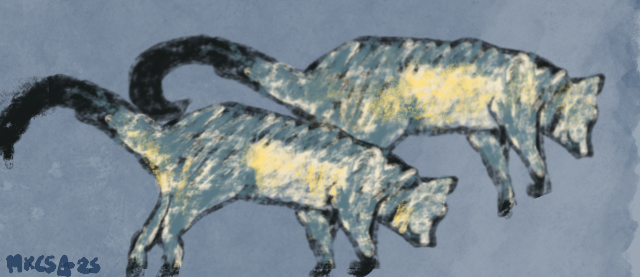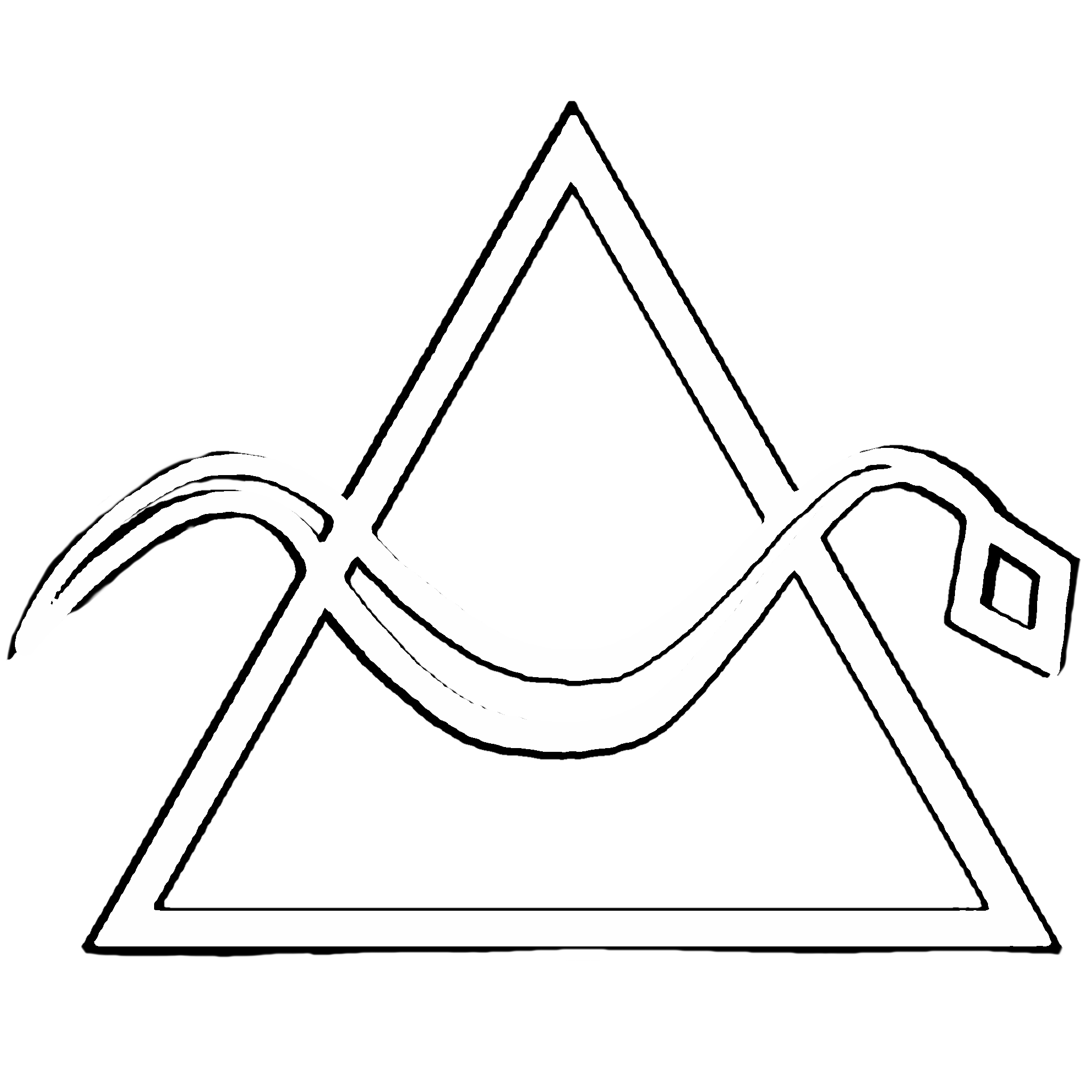Creative solutions and feedback
My most creative work is usually the result of unusually challenging sets of constraints. It’s digging in, and really understanding all the requirements, that make space to come up with something unique.

At high school, I studied art for five years with Rob McLeod. It was the best training I have ever had in giving or receiving feedback and in creating new things. (Also really, really good art lessons.)
Feedback
The lessons on feedback were very practical. We’d all get our work out onto the floor together in the foyer, and then we’d each give and receive constructive criticism. Mr McLeod (in senior years, Rob) would tell us to try to work out what the person was trying to do and to give suggestions for how they could do that. It’s significantly different from just telling someone how to do ‘better’, with the assumption that the critic’s goal for the work is more important than the artist’s. Focusing on helping someone achieve their goals, rather than your own, is a great starting point for good feedback.
Learning to listen both for good ideas in the feedback and for evidence of any ways in which my intention wasn’t clear, as shown in people’s assumptions about what I was trying to achieve, was unbelievably useful. It takes a lot of the sting out of criticism when you see it as a (possibly clueless but) well intentioned attempt to help you achieve your goals. It becomes easier to take on board and get the value of other people’s ideas. And it’s a lot more effective to look at someone’s work for what they are trying to do, and then help with that, than to try to railroad people into doing things your way.
None of us approach things exactly the same way, and people do the best work when they’re not trying to be someone else.
Creativity
The lessons in creativity were primarily lessons in working around constraints and in taking advantage of the unexpected. We would be given a set of requirements for a work: make a sculpture using only building paper, nails, Indian ink, brocks, and straws; paint a black and white city street on an A1 sheet of cardboard that has just had a random scribble of industrial graphite lubricant squirted across it; make an image of two dead possums, work only in cheap crayons on rough grey paper, in four weeks, and fill the (A2) page with the image.
And then we’d work. With a feedback session or two after the first week. And possibly some random factors, helpfully supplied by Rob.
For the graphite-squiggle work, I remember holding Rob off at arm‘s length with some non-washable orange paint aimed at his shirt, because I’d just nailed my composition and he was wandering around the room adding a second squiggle to everyone’s work. I was absolutely not having it. I occasionally wonder what I’d have seen myself do if I’d let that happen.
(The possums were real, and someone would have to collect them from the biology department freezer at the start of each lesson. They had been shot by a classmate‘s mother on her farm.)
Because the artworks had such clear constraints, we competed to come up with ways to express ourselves around and within them. When we made ’idealised, godlike, self-portraits’ in soft pastels, filling an A1 sheet of grey paper, they were wildly different. Zoe, with her long blonde hair, had drawn herself as a Botticelli Venus. Bret made the most amazingly anxious (and huge) image that reminded me of both Russian icons and Richard Briers. I did a black and white face with only my eyes and hair in colour, thinking of Pygmalion’s statue coming to life.

What I learned from Rob here was how important constraints are for creativity. When we’d all been told to make a self-portrait, a couple of years before, with less constraints, the images had been far more similar. But with the addition of detailed and challenging constraints, like ‘idealised’, ‘godlike’, and ‘filling a whole A1 page’, we started looking for ways around them and past them.
Constraints and media shape creative work, but they also free up the imagination to seek the unexpected.
What this looks like in my work
I have designed some learning solutions that have been praised as highly creative in the last few years. Often, people have then asked about how I have come up with the ideas, with a very clear assumption that it’s some sort of brainstorming technique or blue-sky thinking, where I let go of constraints and let my spirit soar.
For me, coming up with new solutions to learning problems is just about the exact reverse of that. (No shade to people who innovate by going away from structures. But it’s definitely not the only way to make something new.)
My most creative work is usually the result of unusually challenging sets of constraints. It’s digging in and really understanding all the requirements that gives me the space to come up with something unique.
The constraints
For example, a client came to me in 2020 with the request to make a learning activity that met these criteria:
- Framed as a competitive activity not a learning activity, so it had to:
- give learners a range of scores, so there are clear winners and not everyone gets the same score
- have scores that are earned, not random
- Less than half an hour
- Set up to drive good publicity for the organisers, so it needed to be:
- visually attractive and engaging for onlookers
- unusual enough to get onlookers talking about it
- Targeting a change in contestant’s behaviours on the job to improve safety and wellbeing practices, so had to:
- be firmly grounded in the realities of the contestant’s Aotearoa New Zealand industry
- teach contestants and observers:
- how to use a tool to manage risks for workplace health and safety
- about one key way to communicate well about health and safety
- key facts about how to manage specific risks
- Face-to-face session, run by a health and safety expert with little to no facilitation experience
No small request! Honestly, it felt like a lot.
What I did
I did a rough plan for a learning game — just enough to get approval to proceed, and worked with my client‘s subject experts to understand the learning and make realistic scenarios.
Because I needed a competitive game, I also called in advice from Richard Durham, who I knew had fabulous insights into game design for learning. Rich and I had a brilliant brainstorming session that set me up to plan a game-show-inspired thought experiment in which players have to solve a workplace scenario, are given scores and feedback on how they could have scored higher, and then solve a second scenario. This scoring and feedback is how the activity teaches both the contestants and the audience.
To work out how to make it attractive enough, we ran a focus group with typical audience members. I was very surprised when I subsequently found myself responsible for designing an adjustable miniature diorama!
But we developed it. We refined, tested, and rerefined the scoring so the activity could be run by someone with little experience and so it worked as a meaningful feedback loop for the contestants.
What we built
A scenario-based activity centring around a really adorable 1:38 scale workplace diorama. The facilitator introduces the workplace and one simple task the ‘manager’ (our contestant) needs their team to get done for the day. They explain that the contestant needs to plan how their team can do the task safely, and then share their plan with the facilitator (roleplaying as the manager’s team). They explain the scoring system.
After the contestant has done this, they talk through the score and show where the contestant could have done better, as a communicator and as a risk manager.
They move parts of the diorama around for a second ‘work day’ and share the new tasks for the day. The contestant has another chance to earn points with a second round.
The final score is a combination of both activities. The whole activity is under strict time constraints to stay within 20 minutes.
How did it work out?
The miniature diorama, built by a member of a local model railway club, was enchanting and unexpected enough that people went out of their way to look at it.
The activity got the buzz we hoped for, and the facilitators did a great job.
In the evaluation, we got clear evidence of participants changing their practices on the job as a direct result of the competition. We never told them it was an educational activity, and it worked well as a competition. The scores on the first and second halves of the activity showed that the contestants were learning what we hoped.
It was meeting all our requirements.
My client went on to replicate the format at least twice before I was no longer consulting on the programme.
All this, because we had such clear (and ambitious) design constraints and a mandate to work creatively to meet them.
If we had just focused on the learning objectives and on ‘being creative’, I would never have come up with such an interesting, or effective, solution.

